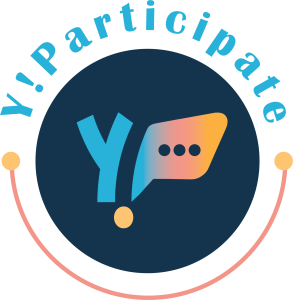The RAYE Suite of Tools
Tools to help organizations evaluate readiness and create meaningful opportunities for adolescent and youth participation.
- What is the RAYE Suite of Tools?
- How it was developed
- How to get started
The Readiness for Adolescent and Youth Engagement (RAYE) Suite of Tools is designed to help organizations reflect on their readiness for safe, meaningful, purposeful, mutually beneficial involvement of young people, grounded in best practices. It is composed of:
- Structural Reflection Tool
- Purpose: To facilitate reflection on organizational readiness – financial, operational, and systemic factors for safe and meaningful engagement of young people.
- How to use: Reflect on current policies, structures and practices (not past achievements or future hopes) to identify areas for improvement.
- Who it’s for: Senior management, programmes team, or staff responsible for strategic planning.
- Engagement Checklist
- Purpose: Evaluates individual opportunities for involving young people, ensuring mutual benefit for both young people and the engaging entities.
- How to use: Use it each time you plan a new youth engagement activity to ensure safety, inclusion, and value.
- Who it’s for: Project managers, volunteer coordinators, field staff, or anyone designing youth-facing initiatives.
- In-depth research
- A landscape scan of youth-engagement assessments pinpointed gaps in organisational culture, safeguarding, resources and policy—insights that sparked the concept for a single, interconnected suite of tools.
- Youth co-creation
- Diverse groups of adolescents and youth took part in interviews, focus groups and creative co-design sessions, translating their lived realities into the language and priorities of the RAYE Suite of Tools.
- Expert input and refinement
- Worked with our youth expert advisors with input from multiple other stakeholders to ensure practical, clear, and relevant outputs for a well-rounded suite of tools.
- Pilot testing
- Partnered with War Child Holland research and development team to facilitate pilots with War Child country programmes in Colombia and Jordan to test the tools in real program settings. Feedback from these pilots helped to streamline the content of the tools, confirmed practicality and ensured the final version works in real-world settings.
- Structural Reflection Tool
- Designate two Reflection Facilitators (RFs) who will coordinate the process and gather the right colleagues and documents.
- Access the full tool pack, which includes a detailed reflection guide and the tool workbook (and open it in Microsoft Excel to keep the built-in formulas working properly).
- Decide whether to run a single workshop or a rolling consultation, as outlined in the Reflection Guide.
- Respond to the given statements to evaluate your organization’s financial, operational, and systemic readiness for youth engagement.
- Reflect on your responses to pinpoint areas of improvement and highlight existing strengths.
- Develop a plan to address any barriers or gaps identified.
- Engagement Checklist
- Open the tool pack (which includes the workbook and a checklist guide) to familiarize yourself with the checklist and instructions.
- Whenever you plan a program or activity where young people are expected to be involved – whether it’s a workshop, advisory group, or research project – run through the checklist.
- Check each item to confirm that the opportunity is safe, inclusive, and valuable for both the young participants and the organization.
- Adjust your approach based on the checklist findings before launching any new initiative.
- Review and Iterate
- Revisit both tools regularly. After completing a project or engagement activity, reflect on what worked and what can be improved.
- As your organization and work evolves, integrate new learnings or changes into future reflections and checklists.
- Check back for updates, new resources, or additional guidance on the Y!Participate platform.
